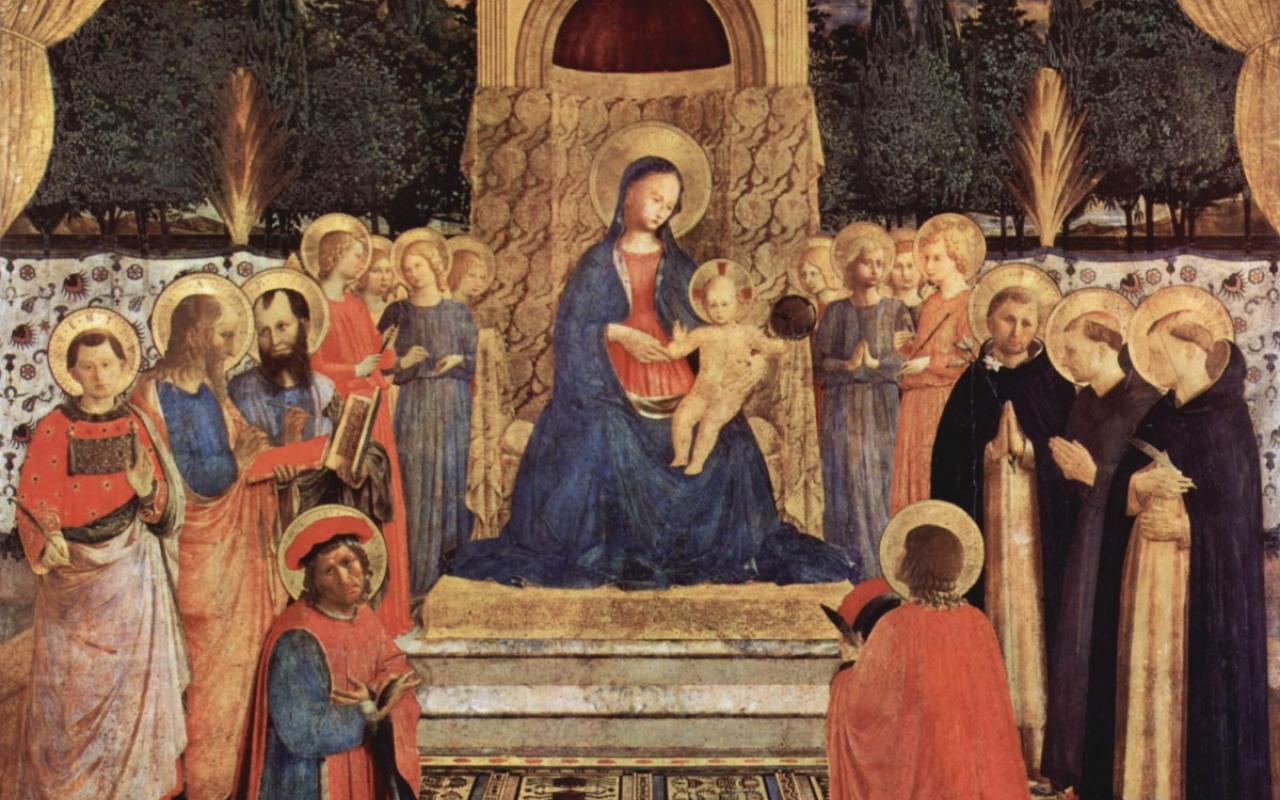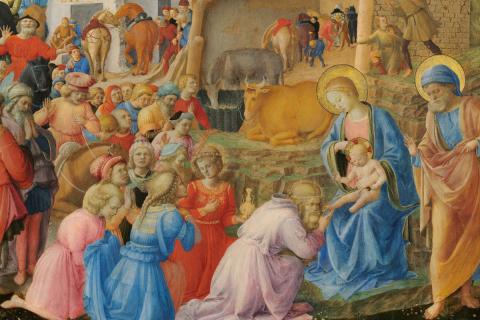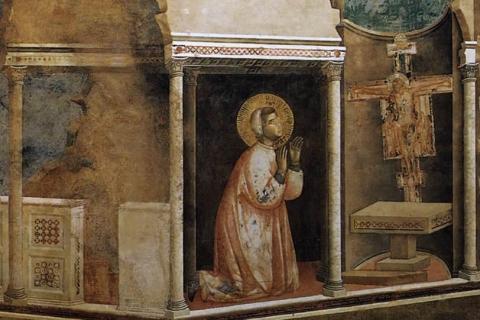
God’s insistence on a particular mode of worship was not arbitrary: he was imparting the order and rhythm of heaven to the earth such that he could dwell among his people in their praises.
“In a liquid modern life there are no permanent bonds, and any that we take up for a time must be tied loosely so that they can be untied again, as quickly and as effortlessly as possible, when circumstances change - as they surely will in our liquid modern society, over and over again” (Zygmunt Bauman).
“Everyone who hears these words of mine and does them will be like a wise man who built his house upon the rock; and the rain fell, and the floods came, and the winds blew and beat upon that house, but it did not fall, because it had been founded on the rock” (Matthew 7:24-5).
Sociologist Zygmunt Bauman has become famous for his descriptions of what he called the liquidity of modern life. In his books, Liquid Life, Liquid Love, Liquid Fear, Liquid Times, and Liquid Modernity, he chronicled the ways that modern life, so entranced by independence and yet so dependent on virtual reality and rapidly changing electronic information, has become unmoored and tends to be experienced as a series of discrete moments that have no solidity through time. The liquidity he describes has thrown questions of morality, relationships, and personal identity into a confusion even more encompassing than that which a fallen humanity has always experienced.
Christ, on the other hand, is the solid rock of truth upon which a life, an identity, and a social world can be firmly founded. Chief among the many ways he accomplishes that solidity for us is his gift of the Liturgy. The Liturgy is many things; one among them is as an ordering principle for the individual believer. When God called the Israelites to worship him, he did not simply tell them to worship in whatever way seemed best to them. He gave them a very specific and ordered way of worship, and when some among them chose to worship him differently, he corrected them severely. Jesus did something similar when he fulfilled the worship given on Sinai by instituting the Eucharist. He did not say: “Do something or other in remembrance of me.” He said: “Do this in remembrance of me.” God’s insistence on a particular mode of worship was not an arbitrary command: he was imparting the order and rhythm of heaven to the earth such that he could dwell among his people in their praises. Because of that, when we engage in the liturgy attentively and learn to be submissive to its demands, we will find over time that we are being formed in heaven’s harmony.
Here are some of the ways the Liturgy helps to bring harmonious order to our lives:
1. The Liturgy orders our relationship with God.
We know that God exists, and that we are meant to be in relation to him. But what are the terms of that relationship? How we are to approach this most holy, most merciful, most powerful, and yet invisible Being? Are we to be lighthearted or serious-minded? Are we to come with tears or with rejoicing? What can we hope from God? How does he look upon us, and how are we to think of him? What is the proper mode of addressing him? What are the forms of speech and action that best express who he is and who we are in his presence? The Liturgy is the great teacher of these things. By the prayers of the Liturgy, by the doctrinal truths embedded in it, by the bodily actions it enjoins, by our praise, our silence, our veneration, by the Liturgy’s overall spirit, we are brought into the rhythms of heavenly life. We can then allow those harmonies to touch our private prayer and our common prayer in other settings. The liturgy, with its roots in heaven, sets the pattern for the whole of our life with God.
2. The Liturgy teaches us to see sacramentally.
God has constituted his creation such that what we see with our eyes is the outward veil of what we do not see. The spiritual and material worlds are not separate and distant from each other. What is material and visible is the road by which the discerning eye learns to see the spiritual and invisible realities hidden within it. This is most true of the seven sacraments, but the same principle radiates through the whole of the created order. Our visible bodies are the outward clothing of our invisible souls. The visible world hides and partly reveals the invisible presence of God’s life and spirit. The poet Gerard Hopkins evoked this sacramental vision in his poem, “God’s Grandeur”: “The world is charged with the grandeur of God; it will flame out like shining from shook foil.”
The Liturgy, with the Eucharist at its heart, is a particularly intense expression of this wider sacramental reality. Everything visible in the Liturgy points to invisible realities. Architecture, music, vestments, prayers, and preaching all are meant to open up the spiritual world upon which the visible world depends. The bread and wine of the Eucharist, the water of Baptism, the holy oil of Confirmation, bring us face to face with spiritual realities in a particularly powerful way. As we allow our perceptions to be formed by the vision given us in the Liturgy, we learn to see all of life by its clarity.
3. The Liturgy orders our relationship with others.
Every liturgical act, even when we pray it by ourselves, is a communal activity. The Liturgy unites us with our brothers and sisters and forms in us the habit of true communion in the Holy Spirit. Christ is constantly sending up a stream of prayer and praise to the Father in the Church’s liturgical life, and when we pray the Liturgy we enter into that rushing stream and are joined to it.
When God called the Israelites to worship him, he did not simply tell them to worship in whatever way seemed best to them. He gave them a very specific and ordered way of worship, and when some among them chose to worship him differently, he corrected them severely.
There are many ways by which humans can find some measure of unity with one another. There is circumstantial unity, of the kind people experience who happen to be in the same place at the same time, or who have had similar life experiences. There is emotional unity, of the kind people experience when they happen to be in the same emotive state. There is ethnic, familial, and national unity, of the kind people experience who share the same biological or cultural background. These and other forms of unity are natural and often good, but they are necessarily fragile and passing, and sometimes they have become sources of human division. They cannot be the basis of a united humanity. In the Liturgy we learn the proper form of unity meant for the whole human race. We are brought to a communion of mind and will in the Holy Spirit, a unity that stretches across the globe and down the ages, and that penetrates the veil separating those currently alive on earth and those who have passed into eternity. In the Liturgy, the curse of Babel has been overturned, and humanity has begun to experience the unity originally intended by God.
We also learn from the Liturgy how to be members of a body. We find there a principle of equality and a principle of hierarchy, the combination of which, rooted in the life of the three persons of the Trinity, leads to human freedom and fulfillment. On the one hand the Liturgy teaches us genuine equality. Unlike pagan rites of worship in which the god lived in the temple, the priests served the god directly by offering sacrifice, and the people waited outside in hope and fear, Christian worship brings every believer into the temple where God dwells, since all are filled with God’s Holy Spirit. Everyone has a priestly role to play; each offers a sacrifice of praise and an offering of life to God. At the same time the Liturgy orders the Body of Christ such that there is harmony and not cacophony among them. The priest, the deacon, the lector, the singer in the choir, the lay worshipper, each has an appointed role and place, and the “whole Christ,” as St. Augustine was fond of saying, unites in worship of the Father. This principle of ordered equality taught by the Liturgy then radiates outward and touches all our relationships.
4. The Liturgy harmonizes our inner faculties.
Humans are a combination of physical and spiritual faculties. We share mind and will with angelic beings, and we share emotions and senses with the animal world. It is part of the wound of the Fall that our various faculties have been thrown out of their intended order. Much of the process of conversion and growth in holiness involves regaining our inner harmony, as our mind, our will, our emotions, and our senses find their proper relation to each other and lead us to all things good and true.
The Liturgy engages the whole of our humanity, and teaches us how to rightly order our various powers. It first addresses our minds, our highest and most God-like faculty. It insists that truth be the foundation for everything else. The liturgical prayers are imbued with clear and strong doctrine, the liturgical year brings the most important Christian truths regularly before our minds and spirits, and all the truths of the faith are kept in their proper relation to one another. The Liturgy addresses our wills: it will not leave us as passive onlookers, but demands a willing assent and a voluntary determination to be attentive and responsive as we unite ourselves to Christ and our heavenly Father. The Liturgy addresses our emotions: through music and art, through the power of God’s word, through its momentous and restrained actions, emotion is always present, but restrained so as not to overrule the mind and the will. The Liturgy addresses our senses: sight, hearing, touch, smell, taste, all are engaged in different ways and at different moments. As we give ourselves to the pattern of the Liturgy we find our faculties coming into greater harmony, and we apply the lesson to the rest of life.
5. The Liturgy orders our time.
The book of Ecclesiastes says: “God has made everything beautiful in its time; also he has put eternity into man’s mind” (Ecclesiastes 3:11). Here lies much of the drama of being human. We have been created in time and we are at home in the things of time, and yet the longing for eternity haunts us. How are we to deal with both time and timelessness? How are we to reconcile the demands of eternity with those of time such that we neither forget the things of eternity entirely and so fall into despair at the passing of all that we love, nor yearn so greatly for eternity that we come to despise our temporal life and wander into an airy mysticism? How are we to order our days and our years such that their passing does not become a rushing stream with no meaning, nor a repetitive process that wearies us by its sameness? And how are we to remember the true narrative of our lives, and so preserve our immortal identity in the midst of all things passing? The Liturgy is our teacher.
The Liturgy orders the day. Morning prayer and evening prayer are the two hinges of the day, and the public prayer of the Church, safeguarded by the contemplative part of Christ’s Body as they pray their hours, give each day its proper shape.
The Liturgy orders the week. Our seven-day week is itself a liturgical practice given by God as a participation in the world’s first ordering. Each week is a new stage on the pilgrim journey to our true home. Every Friday is an echo of Good Friday, and every Sunday is a re-living of Easter Sunday.
If... we determine to change what we do not like in the Liturgy instead of changing ourselves, we will only succeed in exporting into the Liturgy our own corruptions, imbalances, and disfigurements, and its formative potency will be lost to us.
The Liturgy orders the year. We begin the year each Advent, longing for the full coming of God’s kingdom, and then celebrate the marvel of the Incarnation. During the 40 Days of Lent we embrace repentance and purification to prepare us for the gripping drama of Christ’s passion, death and resurrection. The 50 Days of Easter anticipate the coming wedding feast of Christ and the Church. The round of solemnities and saints’ days give a steady rhythm to the coming in and going out of the year.
The Liturgy orders cosmic time. Lest the pattern of each year seem to be only a wearying cycle of return, the Liturgy holds before us the grand narrative of our race, and we are constantly reminded that we are active participants in a dramatic story moving forward to its fulfillment.
As it orders our days and years, the Liturgy gives us a kind of temporal architecture within which we can walk successfully through life. It maintains a fine balance, reminding us steadily of the eternity God has called us to, and yet returning us day by day to the humble and important duties of time that will gain for us that eternal home.
6. The Liturgy orders our relationship to material things.
Though it deals essentially with spiritual realities, the Liturgy leaves nothing of creation out of its purview. It orders wood and stone; it gives significance to bread and wine, water and oil; it touches on modes of dress; it adorns itself with precious metals and works of art; it handles money; and it insists on dealing with all these things according to their created reality as it fashions them for beauty and usefulness. It shows us the manner by which immortal beings can best interact with the wider material creation, calling everything to play its part in making the earth a temple for God’s dwelling and praise.
Given the ordering principle inherent in the Liturgy, it should come as no surprise that it is not always comfortable for us. The Blessed Mother could no doubt pray the Divine Liturgy in perfect ease and contentment. The rest of us, disfigured and out of harmony as we are, inevitably find bits of the Liturgy difficult. When this happens, always provided that the Liturgy is being well and faithfully celebrated, it is usually because there is something in us that needs to change and be brought into union with heaven’s order of beauty and love. If, when confronted by that difficulty, we determine to change what we do not like in the Liturgy instead of changing ourselves, we will only succeed in exporting into the Liturgy our own corruptions, imbalances, and disfigurements, and its formative potency will be lost to us.
We are never more fully and truly human than when we are in tune with the Liturgy. As we hope to be transformed into the image of Christ, as we desire to grow in holiness, as we wrestle to bring the jostling powers and faculties within us to peace and harmony, let us learn to pray the Liturgy well, to allow it to teach us, to submit to its rhythms. The further we go along that road, the more we will find the Divine Liturgy providing the solid rock of Christ upon which we can build our house, one that can withstand the winds and floods of this beautiful yet difficult existence in which we have been placed.

